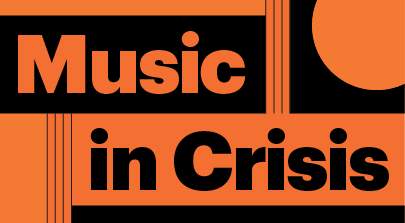Nashville’s Bluebird Cafe Is Built on Intimacy. How Does It Carry On?

This is the fourth installment of Rolling Stone’s Music in Crisis series, which looks at how people all across the music industry are coping with the coronavirus pandemic.
 The Bluebird Cafe is one Nashville‘s most important and idiosyncratic venues: an impossibly tiny listening room where songwriters and surprise guests like Taylor Swift and Garth Brooks perform their original material within fingertips’ reach of fans. That doesn’t exactly make it well-suited for social distancing, even when crowds are allowed to gather again. Shuttered since mid-March, the club is now figuring out new ways to stay afloat, from livestreamed songwriter rounds to the rerelease of a superb documentary that captures the essence of the Bluebird experience. It’s also slated to be an integral part of September’s ACM Awards, which will broadcast live performances from the venue on CBS. In her own words, Bluebird Cafe president and GM Erika Wollam Nichols talks about the future of the Music City landmark. “It’s still such an unknown for all of us,” she says.
The Bluebird Cafe is one Nashville‘s most important and idiosyncratic venues: an impossibly tiny listening room where songwriters and surprise guests like Taylor Swift and Garth Brooks perform their original material within fingertips’ reach of fans. That doesn’t exactly make it well-suited for social distancing, even when crowds are allowed to gather again. Shuttered since mid-March, the club is now figuring out new ways to stay afloat, from livestreamed songwriter rounds to the rerelease of a superb documentary that captures the essence of the Bluebird experience. It’s also slated to be an integral part of September’s ACM Awards, which will broadcast live performances from the venue on CBS. In her own words, Bluebird Cafe president and GM Erika Wollam Nichols talks about the future of the Music City landmark. “It’s still such an unknown for all of us,” she says.
We closed the doors on March 13th. I paid all of my frontline staff through the end of the month, and I tried to make up the difference in tips for the wait staff, but I furloughed 27 people. That was horrible. I put them all on unemployment. I had people I’ve furloughed who have been there 26 years. That’s really hard. We had a staff Zoom meeting a week ago just to check in on everybody. Especially at the Bluebird, it’s a family.
We’re very fortunate that [Bluebird Cafe founder] Amy Kurland owns the space that the Bluebird is in, so I don’t feel like we’re in immediate danger, but our eyeballs are on the numbers every week. I think we could reopen at a limited capacity, sort of spiritually, but economically there has to be a break-even. As a 90-seat venue that is only seated twice [per night], with no tables turning, we already have a very thin margin.
If the Bluebird hadn’t been a part of Nashville the television show, I don’t know where we would be right now. We were very fortunate to have that. It allowed us to sell merchandise, which is great for our bottom line when you have such a tiny room. But that’s pretty much gone. We work in partnership with the Grand Ole Opry with our store, who are able to warehouse and fulfill our orders, and they’re not open now. So we’ve been selling Bluebird-branded bracelets made out of old guitar strings, with Strings of Hope, to help our bottom line. People’s response to that has been amazing. They’re wanting to be a part of the Bluebird and help us sustain. I still have some key staff employed and they’re necessary to keep us connected to our fans.
We’re experimenting with streaming performances too. We did a test last week to see how we can get three or four writers performing together. And if the world does open up enough that songwriters are comfortable to come to the Bluebird without a live audience, then we’d love to do that here. When the artists and songwriters come into the Bluebird, they’re sitting in the middle of the room, and you’re sitting next to them. We try to keep that in mind as we talk about how we can do anything digital and maintain that sense of what the Bluebird is at heart. We can’t duplicate plunking you into the middle of the room, sitting on Vince Gill’s left arm, but we can still do our very best to create that experience for people.
We also have a unique opportunity now with the Bluebird documentary that came out last year. People are at home and are watching things more, so it seems like a good time to bring the film back. We had it on CMT and on iTunes, but we’re working to raise its profile again. People want to feel good, and this is a feel-good movie. It really captures what it is like to be together — we’re not going to have that for a little while, so the movie can give you that feeing of connection.
All of those things go into the economics of when we reopen, how we reopen, and what it looks like. I’ve seen the mayor’s phase plan, and we have a lot to learn over the next couple of weeks with what’s going to happen with the economies and the virus in all of these different cities that are relaxing their guidelines. It’s still such an unknown for all of us. In many ways, it’s like opening a new business. It’s great that we have a brand to reopen this new business with, but what does it look like with all of the guidelines and restrictions? We’re kind of back at square one.